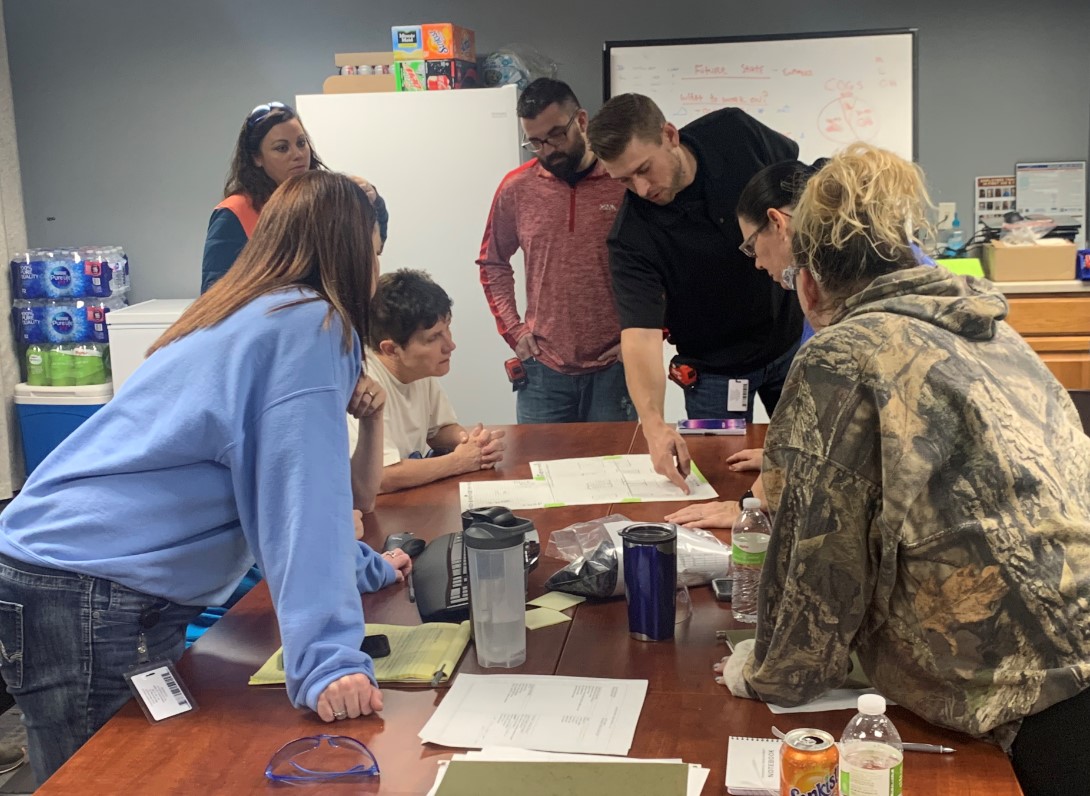
Since it’s near the end of the year and your company might consider Lean training for next year, I thought I’d give you an early present and cover what to include in your Lean training. This is not an exhaustive list and I’m going to break this up over several weeks. I’ll cover more topics through the end of the year. So stay tuned!
If you cover these topics, I know you will have a very solid start in educating employees on Lean topics that will benefit your company immensely! It’s helpful to add workshops for many of these topics to keep people excited and engaged when we can all get into a training room again!
1. Lean History
People need to know Lean isn’t something new. It wasn’t invented by Toyota. You can trace the roots of Lean to Frederick Taylor, who understood if you divide work evenly among multiple people, you can produce a product quicker than one person building the item can. This was in the late 1800s.
Henry Ford used that concept to build millions of cars and it revolutionized the auto industry. Today Lean is used in many industries, from hospitals and financial services to manufacturing. Don’t spend too much time on this, just provide some background.
2. Value-added and Non-value-added work
Something the customer will pay for is value-added work. Just about everything else is waste. The entire goal of Lean is to identify and eliminate waste from processes. Not eliminate people.
When companies say they don’t have time to work on eliminating waste, it’s because they spend too much time conducting nonvalue-added activities. Rework, building scrap, dispositioning scrap, looking for things, traveling, etc. When you eliminate the waste, you do less firefighting.
3. The Eight Wastes
Now that you’ve mentioned waste within processes, it’s time to introduce the eight wastes. Put these in this order so they spell the mnemonic DOWNTIME. Defects, Overproduction, Waiting, Not Listening to People’s Ideas (N), Transportation, Inventory, Motion, Excess Processing.
Have employees identify wastes in their areas that fall into these categories. This gets them thinking. Write them down on a flip chart.
4. 6S
6S is a cleaning and organizing method. Each step begins with the letter S. Sort, Shine, Set-in-place, Standardize, and Sustain. This is a key Lean method and where many companies begin their Lean journey.
The key to drive this home is to show pictures of areas that have gone through the 6S process. Share before and after pictures. Show pictures of what a mess the area was before and what it looks like after everything is in its place.
You can discuss if your company will conduct 6S audits or use a better method, which I will share in a later blog.
Next week I will cover more on what to include in your Lean training.
As always, it is an honor to serve you, and I hope that you and your company are getting better every day!
Follow me on Twitter
Join me on LinkedIn
Listen to the podcast here
